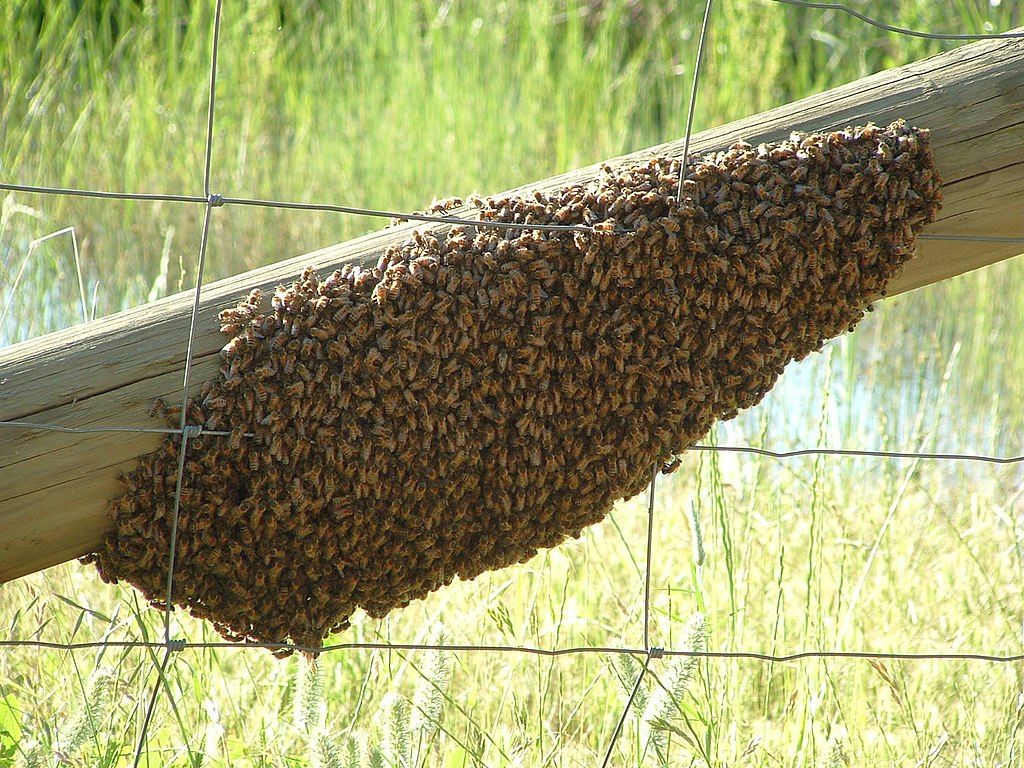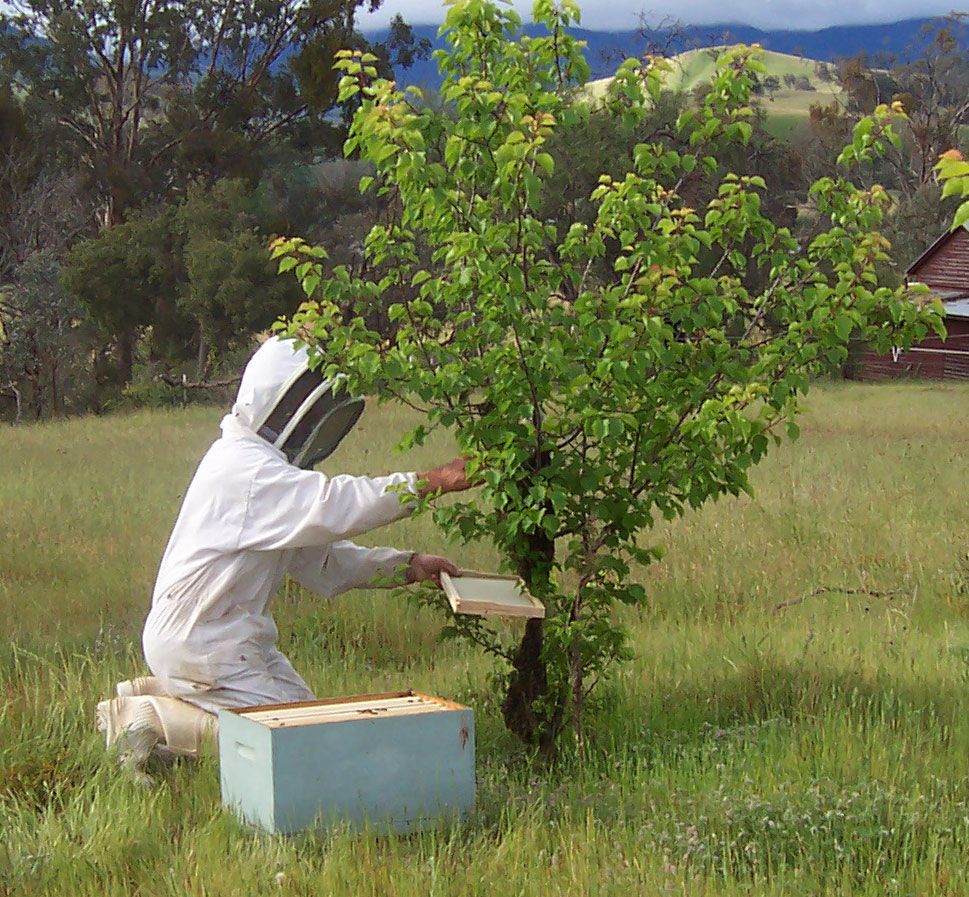
16 April 2021
In late spring you may find a swarm of insects gathered in a tight cluster on a structure or tree. No matter what they are, stand back and leave them alone. Safely try to identify them.
If they’re wasps they’re dangerous. If they’re spotted lanternflies you have a problem. If they’re honey bees (Apis mellifera) they’re good news and relatively docile. Here’s what they’re up to.
Swarming is a honey bee colony’s natural means of reproduction. In the process of swarming, a single colony splits into two or more distinct colonies.
Swarms settle 20–30 m (65-100 ft) away from the natal nest for a few days and will then depart for a new nest site after getting information from scout bees. Scout bees search for suitable cavities in which to construct the swarm’s home. Successful scouts will then come back and report the location of suitable nesting sites to the other bees.
— Wikipedia: Swarming (honey bee)
Honey bees are valuable pollinators and should not be killed. Beekeepers want the bees.
Most beekeepers will remove a honeybee swarm for a small fee or maybe even free if they are nearby. Bee swarms can almost always be collected alive and relocated by a competent beekeeper or bee removal company. Extermination of a bee swarm is rarely necessary and discouraged if bee removal is possible.
— Wikipedia: Swarming (honey bee)
Swarming season keeps beekeepers very busy!

They usually suit up and remove the bees without a lot of fanfare as in this video by Donald Porta who removed the bees in 27 seconds (after he got set up).
There are also flamboyant bee wranglers such as Yappy Beeman who don’t wear protective clothing. YappyBeeman, below, competes on YouTube with JPtheBeeman, DirtRooster and Mr. Ed.
video from Yappy Beeman on YouTube
p.s. If you have questions about honey bees contact local beekeepers for assistance. See the list of Pennsylvania State Beekeepers. Check Burgh Bees in the Pittsburgh area.
Not sure what bug you’re looking at? Here’s a helpful guide from the Connecticut Beekeepers Association: Honey Bee Hive vs. Wasp Nest: How to Identify the Difference.
(photos from Wikimedia Commons, video from Yappy Beeman on YouTube)
Bare foot memories… stubbed toes AND honey bee stings.
Today honey bees are rare.
Today it’s “ground bees” –– shoes or no shoes.
Hi Kate & fellow bird aficionados—
Today April 29 there is a great deal on Amazon for kindle book —
$2.99 for
Beaks, Bones & Bird Songs: How the Struggle for Survival Has Shaped Birds and Their Behavior Kindle Edition
by Roger J. Lederer (Author) Format: Kindle Edition